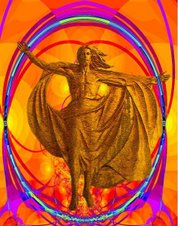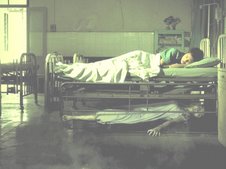Sunday, July 29, 2012
William Haines
http://www.examiner.com/article/william-haines-hollywood-bohemian-fashion-queer-iconography
& Hollywood bohemian fashion & queer iconography
0 Email
Joel Nikolaou's photo
Joel Nikolaou
European Fashion Examiner
+ Subscribe
William Haines. 1932
Hollywood star Ramon Navarro in painted face as was the androgonyous fashion of the day.
Getty Images
Related articles
Androgony is an alternative to Drag
William Haines ran away from home at the age of 14, with another unidentified young man whom Haines referred to as his "boyfriend".
The pair went first to Richmond, Virginia and then to Hopewell, Virginia which had a reputation for immorality. Haines and his boyfriend got jobs working at the local DuPont factory, producing nitrocellulose for $50 a week. To supplement their income, the couple opened a dance hall, which may have also served as a brothel.[
His parents, frantic over his disappearance, tracked him through the police to Hopewell, Virginia. Haines did not return home with them, remaining instead in Hopewell and sending money back home to help support the family. The couple remained in Hopewell until most of the town was destroyed by fire in 1915. Haines moved to New York City.
In 1933, Haines was arrested in a YMCA with a sailor he had picked up in Los Angeles' Pershing Square. Louis B. Mayer, the studio head at MGM, delivered an ultimatum to Haines: choose between a sham marriage or "lavender marriage," or his relationship with Shields. Haines chose Shields and they remained together for almost 50 years. Joan Crawford at the time stood up for William Haines. Joan Crawford, and William Haines were the number#1, and number#2 biggest box office stars of Hollywood at the time. The 1930 Quigley Poll, a survey of film exhibitors, listed Haines as the top box office attraction in the country. Joan Crawford threatened to tear up her contract, if they didn't relent with William Haines. Joan Crawford braved retribution, but was fearless, and the studios were afraid of antaganozing the biggest female star of the day. Still, Mayer subsequently offered an ultimatum; he either renounced his Homosexuality, or feign a "lavender marriage". These were the marriages, and relationships the studios created for 'in the closet' male stars. Haines refused to renounce his relationship with his longtime partner Jimmy Shields and Mayer terminated his contract. William Haines then went on to become one of the most celebrated designers in Hollywood
Hollywood pre-code was actually more enlightnened and progressive than it is today. In 1934 the Hayes code was enacted, and the censorship, and bigotry, and sexism, were enforced. Certified boards would review all films for objectionable material. Movies made in the early '30s had strong independent women who had opinions, and who were not second class citizens. Also, openly gay acting men, were depicted on the screen and would not reappear in over 60 years. Additionally, the late '20s and early '30s, America was under what was called the pansy craze. Speakeasies in New York, Los Angeles, Chicago, San Francisco etc...where men in drag, emceed, were all the rage. The Speakeasies were packed with people trying to get in to these clubs; they were very popular. Also curious is the fact that a similiar backlash occurred in Germany with the rise of fascism. '20s Berlin had a similar if not more elaborate open, caberet scene. Homesexuality, transvestism, and cross dressing emcee's were the rage. Hitler, did the same on a more extreme manner, in banning what was called decadent behavior. But, still it was the same type of backlash, in both countries. But, the Hayes code of 1934 was eerily preceded in Germany with hitler's rise to power in 1933, and his attack on "Degenerate Culture".
Scene from 1930 movie. Two men dancing. This wouldn't pass the censors after the 1934 Hayes code.
At Tait's Speakeasy in San Francisco Ray Bourbon a prominent drag emcee, in 1933, where his "Boys Will Be Girls" review was raided by police during a live radio show. Subsequently the crackdown began. It is argued that the crackdown that came into the culture, was a result of the Depression. A religious revival of fundamental christianity swept over America, as a response to the economic hard times. People became more scared and less tolerant.
Getty Images. William Haines.
With the development of the new Hollywood nightlife in the early 1930s, the first significant appearance of Hollywood bohemians in Hollywood nightlife involved women wearing men’s clothing to Hollywood restaurants. Women have worn suits, hats and other clothing associated with men in a variety of world cultures, often in order to spend their lives disguised as men. However, in Hollywood, the women did not deny their biological sex. The women wore the men’s clothes as a feminist statement, as an indication of gender inversion, or both. Noone missed with these women.
Getty Images. In the early 1930's, Hollywood siren Marlene Dietrich stepped out in style. Here's a male boemian outfit for a night out at the Coconut Grove. Trouser suit, bow tie and a masculine hat. It was certainly a look that shocked the more conservative. It was not long however when this androgynous style was copied by the mass market.
Getty Images. Gloria Swanson, at the height of her Hollywood bohemian glamour 1921. Take notes. Make-up, hair, clothes. Perfection.
Getty Images. Sex God. Effeminate male Hollywood sex God, Rudolph Valentino, in provocative pose. Does he like men, or women. Like Dietrich said it didn't matter, as long as they were beautiful. Notice the make-up, including some rouge on the lips. Ramon Navarro, and Rudolph Valentino pictured above were the two biggest male stars of the '20s, and were very effeminate by today's standards. Ramon Navarro like William Haines was openly Homosexual, and again one of the biggest stars of his day. Men would copy this for a time in the '20s.Very androgonous, but still masculine.
Media portrayals of these Hollywood bohemian women echoed the general pattern of Hollywood nightlife images by emphasizing the trendy environs and presenting information about the activities and personalities of Hollywood celebrities. The magnificent Gloria Swanson, was seen having lunch today at the Trocadero with here new boy, so and so. etc... it was hard to keep track, she had a new one every week. Gloria Swanson treated men, like they were rugs, after she used them, she would toss them aside like bad rubbish. So fabulous. No phony sentiment like there is today. People loved it. Women had never been this empowered. The images used the depiction of women defying the culture’s standards for clothing as a way of showing the sophistication of Hollywood and making its nightlife appear taboo and more spectacular than the nightlife in New York City or anywhere else. The Trocadero and Cocunut Grove were the hot spots. Marlene Dietrich, and Greta Garbo openly flaunted their lesbian affairs. Marlene Dietrich and Greta Garbo in androgonous fashion ruled the social life, in pre-Code Hollywood. In 1932 Marlene Dietrich went to a private Hollywood party wearing white flannel trousers, a very masculine blue blazer, and a yachting hat. She caused a sensation, and the studios took a photo of her, in the outfit, and sent out publicity releases with the caption Marlene Dietrich "The Woman Even Women Can Adore". Marlene Dietrich once said, "In Europe it doesn't matter if you are a man or woman, we make love to anyone we find attractive".
More than anyone else though, Rudolph Valentino was not only the biggest Hollywood sensation, he was the trend setter of his day. His style was attacked in the press, as too effeminate. His clothes, his grooming were iconographically queer, and they created an absolute panic among homophobes. He was box office gold. The homophobes hated him with a passion. He was a threat to thier so called masculinity. His queer iconography was only matched by his adulation by women, obsessed with his style. He encouraged men to pomade, and powder their faces. For a time vending machines in men's restrooms, supplied powder for men to apply on the go. You know, men going to the restrooms to powder their face, just like women: in the fabulous'20s. Rudolph Valention powdered his face, wore extravagant green suits, beaver collars, and slave bracelets. And he was the number #1 Sex God of Hollywood.
Additionally Marlene Dietrich, wore men's clothing and top hat, with red lipstick , spats, and gloves, and openly flirted in bi-sexual relations, that were fuel for the tabloids of the day. People loved scandal just as much as they do today.Lesbian, and gay tryists between Hollywood stars were open scandals in the Hollywood press. The open orange groves of undeveloped LA county were the gossip of scandalous rendezvous among stars, and people who wanted to be stars, sometimes in full flagrante, out in the open. Hollywood pre-code was tres scandelous. Early Hollywood, was a bohemian and artistic world. The commercialization of Hollywood that ensued was, more predicated on the changing morales of Americans, especially after Prohibtion.
See Marlene Dietrich. See Marlene Dietrich, in the movie "Morocco" that made her a star in America. Dressed as a man. See a real star. See Marlene Dietrich, below, in the final scene, from "Dishonered" as she adusts her lipstick, and fixes her stockings, seconds before her death in front of a firing squad, in the last scene of the movie. That's a star.
Gay L.A.- A history of sexual outlaws
Advertisement
Click here to find out more!
0 Email
Print
Report
Joel Nikolaou, European Fashion Examiner
Joseph Nikolaou is an obsessive follower of European fashion, with a knowledge of street fashion, and an ability to advise men on looks that are simple and street smart. With a personal affinity and knowledge of European Culture/Art, and a personal style to match, he offers a unique perspective...
Subscribe
RSS Feed
Become an Examiner
Comments
Profile picture of Brett A
Brett A 1 year ago
This is a fascinating read. Hollywood used these images during the 1920s and 1930s to market itself as a unique place in the culture. It added titillation and excitement to the readers of Hollywood gossip columns and novels about Hollywood.
I discuss this in my book: Hollywood Bohemians: Transgressive Sexuality and the Selling of the Movieland Dream. http://www.mcfarlandpub.com/book-2.php?id=978-0-7864-3929-4
reply
Report
Profile picture of Joel Nikolaou
Joel Nikolaou 1 year ago
Yes thank you for your comment. Yes Hollywood did appeal to Americans prurient desires. That is hypocrisy. Americans prurient desires are masked with this hypocritical morality which contradicts itself. Europeans openly comment on this hypocrisy, they don't understand it, and the irony is that a lot of Americans don't either! Please feel free to stay in touch with me or send me an email joenikolaou@comcast.net...
reply
Report
Anonymous 8 months ago
Valentino may have been gay or bisexual, but he did not seem "effeminate" in his films. Far from encouraging men to pomade their faces, he was insulted and went so far as to threaten the reporter who implied his influence was creating a generation of men who powdered their faces. Valentino worked on cars, rode horses, boxed, etc. As I said, he may have been gay, but he was not effeminate. No one in Hollywood thought so. You'll never read an article from the 1920s where a contemporary implied he was effeminate--not until the "powder puff" fiasco. Let's not rewrite history. Actual research of primary documents might help.
reply
Report
Anonymous 8 months ago
I certainly wouldn't say that Ramon Navarro (as much as I admire his work) was ever on the same level as Rudolph Valentino, popularity-wise. John Gilbert might have come close, at least in terms of romantic leads.
reply
Report
Anonymous 8 months ago
And the slave bracelet was from Valentino's wife. So . . ..
Subscribe to:
Post Comments (Atom)







No comments:
Post a Comment